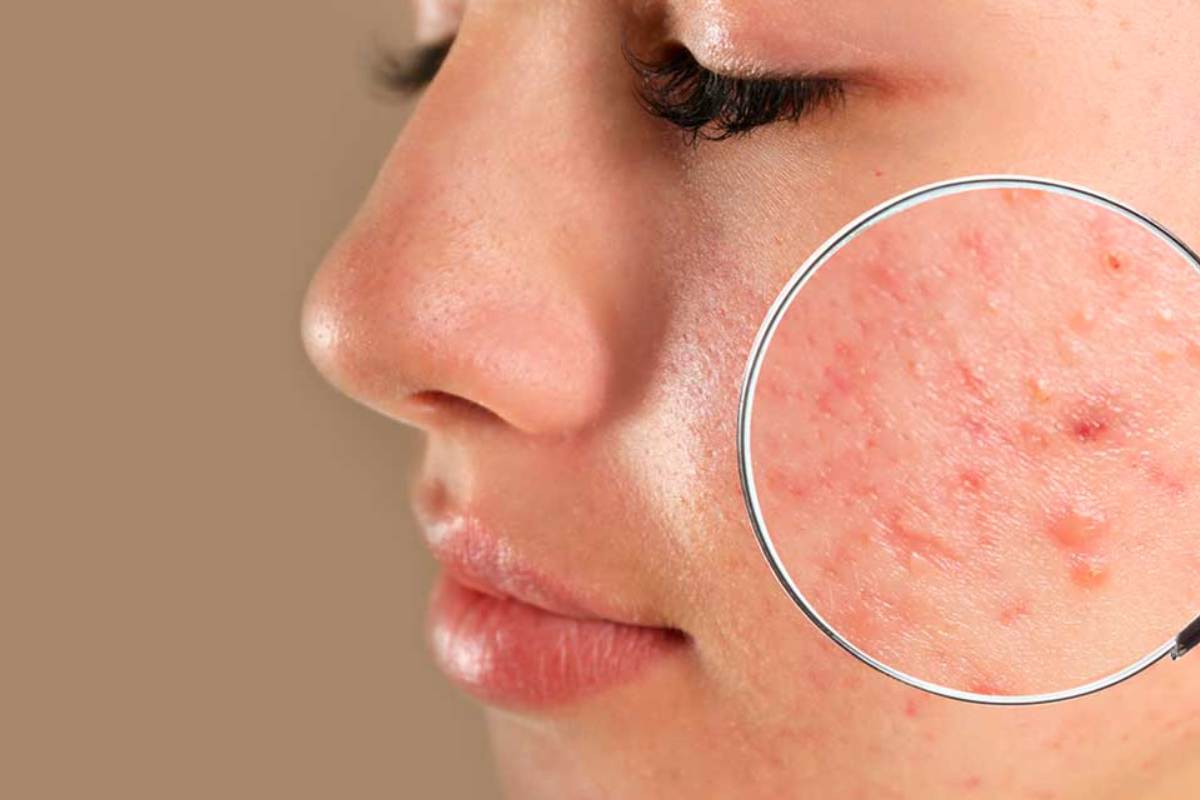Table of Contents
Definition
Unlike regular acne caused by bacteria, fungal acne is causing by a fungus.
In medical circles, it is identify as pityrosporum folliculitis or Malassezia furfur, and it inflames the hair follicles on the skin and causes blemishes.
“It’s perfectly normal for this yeast fungus to live on our skin after sex hormones activate our sebaceous glands at puberty,” says skin expert Dr. Sam Bunting.
“It usually sits quietly, taking its place in the skin’s microbiome, without causing much discomfort.”
What Causes Fungal Acne?
Despite its similarity to bacterial acne, fungal acne is actually caused by yeast.
That exacerbates the hair follicles on your casing and causes pimple-like bumps.
The condition is technically known as pityrosporum folliculitis or Malassezia folliculitis for the specific type of fungus.
Antibiotics are not the only issue in the development of fungal acne.
Sometimes our habits are to blame.
For example
Wearing tight, non-breathable clothing often contributes to flare-ups, says Dr. Chung.
More specifically, wearing sweaty workout clothes for too long or reusing physical equipment without washing.
It can create a hospitable environment for fungus to grow, Emily C. McKenzie, MD, clinical instructor in the department of dermatology from the University of Utah, tells AUTO.
What is the Treatment for Fungal Acne?
Depending on the severity of your breakouts, fungal acne can be as simple as adjusting your lifestyle.
For example
showering and changing clothes right after exercising or wearing looser clothes can do the trick.
But, if lifestyle changes don’t help, your next step for a mild case should be to try an over-the-counter topical treatment.
For example
Despite being marketed as a dandruff shampoo, it works as an antifungal body wash, thanks to its active ingredient.
Other similar products that contain those active ingredients can do the trick too.
And the key to all of them is to let the product sit on the skin for about five minutes before rinsing off.
Other recommended topical treatments include creams containing 2% ketoconazole, econazole nitrate, or 1% clotrimazole cream, which are often using to treat athlete’s foot.
What are the Signs of Fungal Ance?
- You may have this condition if you have any of these signs.
- Acne appears to have a more allergic reaction appearance, with red patches.
- The spots are usually smaller than that of conventional acne and more uniform in size.
- In appearance, they seem to be full of water and not so much sebum.
- It is similar to a red grain with a small white tip.
- Sometimes they have small hair inside the grain.
- It stings more than usual in the areas where the infection occurs, and the itching is enhanced when the temperatures are higher.
- It can appear in unusual places such as armpits, scalp, and chest.
- Fungal acne usually spreads throughout the body as a generalized epidemic.
How to Prevent from Fungal Acne?
1. Cleanse your skin
Regularly washing your skin helps remove excess sebum and bacteria that could be aggravating the infection.
2. Do not over exfoliate
Using invasive products and doing it roughly causes the skin to generate more sebum to compensate for the abrupt loss.
3. Keep your skin dry
Especially after physical activity, it is essential to dry yourself and change your clothes so that bacteria’s appearance is not favored.
4. Don’t pop the pimples
By doing so, the risk of spreading the infection increases.
5. Pay attention to your care
Having the wrong treatment for misdiagnosis makes the situation worse.
Do not forget that the most significant thing is to consult a dermatologist and have a quick visit as soon as you notice imperfections on the skin.

